Tokyo's Railway System Explained: Trains, Subway, and Discount Passes

Tokyo's train network includes JR (Japan Railways) lines, Tokyo Metro, Toei Subway, and various private railway companies serving the metropolitan area. Discover which railway service best suits your travel plans and learn about the cost-saving travel passes offered on each line.
Understanding Tokyo's Train System

Trains at Suidobashi Station, Tokyo. Photo by Pixta
The Japanese railway system is renowned for its organization and efficiency. However, the intricate network of train lines in metropolitan areas like Tokyo can initially seem daunting.
In many European and American countries, railways connect cities and towns, while internal urban public transport relies on buses, trams, and subways. Japan, however, utilizes trains for both inter-city and intra-city travel.
Tokyo and other large Japanese cities also boast highly developed subway networks. Therefore, you will likely need to use both surface and underground lines to travel efficiently.
To save on transportation, we suggest using discount tickets and passes. It's essential, however, to remember on which railway is your ticket valid. The Japan Rail Pass (JR Pass), for instance, can only be used on JR lines.
This article explains Tokyo's train system, introducing the railway companies that operate surface and underground trains in the metropolitan area, along with the convenient discount tickets and passes offered by each of them.
Guide to Tokyo's Train System
Surface Trains
1. Major JR Lines in Tokyo
2. Private Railway Lines in Tokyo: Odakyu, Tobu, Keisei, and Others
Underground Railways
3. Tokyo Metro Lines
4. Toei Subway Lines
Surface Trains in the Tokyo Area
Japan Railways (JR) has the most extensive network of train lines running both within and between Japan's cities. JR is also the company running the Shinkansen (bullet train) lines.

If you have a Japan Rail Pass, you can use it to travel very cost-efficiently on all the JR lines, including the Shinkansen lines, in any area of the country.
You can purchase a JR Pass online as well as Shinkansen tickets. Please note that JR Passes are usually not sold in Japan and should be bought in advance from tourist agencies in your country.
The Main JR Lines in the Tokyo Area
There is a total of 36 lines run by JR East (*1) in the Tokyo area, connecting the various areas of the city, the suburban areas, and the cities in the neighboring prefectures.
We will introduce here the main lines and the ones that may be of particular interest to visitors from abroad.
*1 JR East is the JR branch that covers the Kanto region (Tokyo, Kanagawa, Saitama, Chiba, Gunma, Ibaraki, Tochigi, and Yamanashi), the Tohoku region (Fukushima, Yamagata, Miyagi, Akita, Iwate, Aomori) and the Shin'etsu region (Niigata and Nagano).
Yamanote Line

The Yamanote Line loops around the center of the city, connecting Tokyo Station with areas such as Akihabara, Ueno, Nippori, Ikebukuro, Shinjuku, Harajuku, Shibuya, and Shinagawa.
You can use the Yamanote Line to get to major stations such as Tokyo, Ueno, Shinjuku, Shibuya, and Shinagawa, where you can take other lines in order to reach various areas in Tokyo, as well as other cities.
Chuo Line Rapid Service

The Chuo Line connects the areas east of Tokyo (Nishi-Funabashi in Chiba prefecture) to western Tokyo (Tachikawa, Hachioji, Otsuki). Please note that the Chuo Line Rapid Service operates only
express trains, which means that the trains will stop only at major stations and some other stations on the way.
The stations where the Chuo Line Rapid Service trains don't stop are covered by the Chuo Line - Sobu Line (see below).
Chuo Line - Sobu Line (Local Trains)
The Chuo Line - Sobu Line runs between Mitaka in western Tokyo and Chiba Station, which is east of Tokyo in Chiba prefecture.
The trains of the Chuo-Sobu Line stop at all the stations between Mitaka and Shinjuku (ex. Kichijoji, Koenji, Nakano), between Shinjuku and Ochanomizu (ex. Yotsuya, Iidabashi, Suidobashi), as well as at Akihabara, Asakusabashi, Ryogoku and other stations on their way to Chiba.
To learn more about the difference between express trains and local trains, please refer to the following article.
Keihin-Tohoku Line
The Keihin-Tohoku Line connects the areas south of Tokyo (Ofuna, Yokohama, Kawasaki) with the stations Shinagawa, Tokyo, and Ueno, going up north to Akabane and Omiya in Saitama prefecture.
Shonan Shinjuku Line
The Shonan Shinjuku Line also traverses Tokyo from south to north, connecting Zushi, Kamakura, and Yokohama (Kanagawa prefecture) with Shinagawa, Shinjuku, Shibuya, Ikebukuro, and Akabane (northern Tokyo), reaching Omiya in Saitama prefecture. From Omiya on, the trains on the Shonan Shinjuku Line will go either toward Maebashi in Gunma prefecture or to Utsunomiya in Tochigi.
Please be aware that the Shonan Shinjuku Line stops only at major stations (the ones mentioned above and a few more). This makes it very efficient when you need to travel fast to areas north and south of Tokyo.
Joban Line
The Joban Line connects Ueno and the northeastern areas of Tokyo with Abiko and Narita in Chiba prefecture, and even with cities along the Pacific coast in Ibaraki and Miyagi prefectures.
Tokyo Monorail

The Tokyo Monorail is a service that connects Hamamatsucho, a station on the Yamanote Line south of Tokyo Station, with Haneda International Airport. A ride on the Monorail will bring you from Hamamatsucho to Haneda International Airport in less than 20 minutes.
Please note that, while the JR lines are operating mainly surface trains, some of the lines may have direct connections to Tokyo Metro lines. This is the case of the Chuo Line - Tokyo Metro Tozai Line and the Joban Line (Local) - Tokyo Metro Chiyoda Line. The JR Rail Pass cannot be used on these lines. The Tokyo Metro network and its convenient passes will be introduced below, in the section on Tokyo's underground railways.
Introduced above are some of the major JR lines that can be used to travel within the Tokyo metropolitan area. For more detailed information on all the lines run by JR East, please refer to the official website of JR East.
The other regional branches of Japan Railways are JR West (operating in the Kansai, Hokuriku and Chugoku areas), JR Central (Nagoya area), JR Hokkaido (operating in Hokkaido), JR Kyushu (operating in the Kyushu region) and JR Shikoku (operating in the Shikoku region).
Remember that all the Shinkansen lines are operated by Japan Railways. While the Japan Rail Pass can be used on all the JR lines throughout the country, each JR branch offers its own passes and discount tickets, such as the convenient JR West Kansai WIDE Rail Pass, which allows you to travel around Kyoto, Osaka, and other areas in western Japan.
For further information, see the websites of the JR branch operating in the region you're visiting. You can purchase the JR West Kansai Wide Rail Pass online as well.
Taking into account that the JR Pass is valid only on JR lines, if you want to save money while traveling around Japan, purchase a JR Rail Pass and use mainly JR lines in order to move around.
However, please be aware that many areas within Tokyo and around Japan are not covered by the JR network. There are several other railways operating both surface trains and underground trains that may bring you directly and faster to your destination. Let's take a look at the major private railways operating in the Tokyo area.
Other Surface Railways Operating in the Tokyo Area
Odakyu Railway
The Odakyu lines are extremely convenient if you want to travel to Enoshima and Kamakura, to Hakone, to the Lake Kawaguchi area (near Mt. Fuji), or to the Izu Peninsula area. The Odakyu trains depart from the Odakyu Railway platforms of Shinjuku Station.
By taking the Odakyu line trains, you can reach Enoshima (Katase-Enoshima Station) in 65 minutes, Hakone-Yumoto Station in 85 minutes and Ito Station (in Izu) in 120 minutes.

Odakyu Railway operates the very comfortable and convenient Odakyu Limited Express Romancecar toward Odawara and Hakone-Yumoto, which allows you to travel fast and in comfort to Hakone.
Odakyu also offers several types of economical excursion tickets and transportation passes, which are worth checking out. One such ticket is the 2- or 3-day Hakone Free Pass, useful for moving around the Hakone area. If you are planning to go on a day trip from Tokyo to any of the areas mentioned above (Enoshima, Hakone, Mt. Fuji, Izu), check out the Odakyu Railway map.
Keio Railway
The Keio Railway lines are very convenient if you wish to visit Mt. Takao, Tokyo's most visited mountain, or Kichijoji, a fun neighborhood with trendy cafes and shops.
The two main lines operated by Keio Railway from Tokyo are the Keio Line, with trains that depart from Shinjuku Station running northwest towards Hachioji, the town where Mt. Takao is located, and the Inokashira Line, with trains leaving from Shibuya Station heading to Shimokitazawa, Eifukucho and Kichijoji.
For a detailed map of the Keio Railway lines, please refer to their official website.
Tobu Railway
The Tobu Railway lines are convenient for traveling to Nikko, Kawagoe (Saitama Prefecture), Utsunomiya (Tochigi Prefecture) or Gunma Prefecture, which are northeast of the Tokyo metropolis. Tobu Railway operates a total of 13 lines, with some of them connected to underground lines. These lines are mostly used by the locals who commute from and to the suburbs.

Tobu's Nikko Line has a Limited Express train that brings you in the shortest time to Nikko from Asakusa.
If you want to go by train from Asakusa to the Tokyo SkyTree, you can use the Tobu Skytree Line. The trains depart from the Tobu Asakusa Station. You can find information on the Tobu Railway lines and on their convenient discount passes, which are available only on the Tobu lines, on their official website.
Read also
Seibu Railway
If you plan to visit the tradition-rich and picturesque Chichibu or Kawagoe areas in Saitama Prefecture, you will ride Seibu Railway trains. There are two main lines operated by Seibu Railway: the Seibu Shinjuku Line with trains departing from Seibu-Shinjuku Station (Shinjuku) toward Hon-Kawagoe, and the Seibu Ikebukuro Line with trains departing from Ikebukuro Station toward Seibu-Chichibu Station.
Please refer to this map for the routes covered by Seibu Railway lines. Information on their convenient limited express trains and discount tickets can be found on their official website.
Keisei Electric Railway

Keisei Electric Railway operates the Keisei Skyliner, as well as the Access Express and Limited Express lines connecting Tokyo (Nippori Station or Keisei Ueno Station) with Narita Airport. From Narita Airport, the fastest way to get to Tokyo is taking the Skyliner, taking less than one hour.
Keisei Electric Railway also operates the only direct train line that connects Narita Airport to Haneda Airport - the Access Express, so it is extremely convenient.
Purchase a Keisei Skyliner ticket here.
For more information on the routes and services of the Keisei Electric Railway, please refer to their official website.
Keikyu Lines
The Keikyu Main Line connects inner Tokyo (Asakusa, Shinagawa) with Yokohama, Yokosuka and Haneda Airport International Terminal. The Keikyu Line also offers convenient discount tickets, so check out the information on their official website.
Tokyu Lines
There are nine lines operated by the Tokyu Corporation, among which the Tokyu Toyoko Line, which connects Shibuya to Yokohama, is a major line used by many people every day. Please refer to this Tokyu railway map for details on all the Tokyu lines.
These are the major private railway companies operating surface trains in the Tokyo area. Please note that, although the JR Pass cannot be used on these lines, they each offer discount tickets and convenient passes which are worth checking out.
From here on, we will be introducing the two major underground railway networks operating in the Tokyo area: Tokyo Metro and Toei Subway.
Tokyo's Underground Railway Network

Tokyo Subway Route Map available on the Toei Subway website
There are two major railways operating underground trains in the Tokyo area: Tokyo Metro and Toei Subway. Let's see what are the differences between them and the convenient discount tickets they each offer.
Tokyo Metro Lines
Tokyo Metro operates a total of nine subway lines, which ensure smooth transportation throughout the Tokyo metropolitan area. Many of the Tokyo Metro stations offer convenient connections to surface lines such as the JR and other railways.
Ginza Line

The Ginza Line is recognizable by its orange circle with a capital G inside it, connects Shibuya and Asakusa, with stops at major shopping and sightseeing areas in Tokyo such as Ginza, Nihonbashi, and Ueno. To see all the stations on this line and the available connections, please refer to this map of the Ginza Line.
Tozai Line
The Tozai Line, marked through a sky blue circle with a T inside it, traverses Tokyo from east to west connecting the Nishi-funabashi Station in Chiba prefecture with Nakano Station in central Tokyo. Some of the major stations on the Tozai Line are Otemachi (close to Tokyo Station), Nihonbashi, Waseda, and Takadanobaba.
See all the stops on the Tozai Line on this official map.
Namboku Line
The Namboku Line, marked by an emerald green circle with a capital N inside it, traverses the metropolitan area from south to north, connecting Meguro Station (which is south of Shibuya) to Akabane-iwabuchi Station in the north. If you wish to check out the stations on the Namboku Line, please refer to this map.
Marunouchi Line

The Marunouchi Line, which can be identified by its symbol - a red circle with an M inside, makes an almost complete loop around the center of Tokyo, connecting Ikebukuro Station with Ogikubo Station.
The trains on this subway line also stop at Shinjuku, Ginza, and Tokyo, among other stations. Find a complete list of the stations on the Marunouchi Line here.
Hibiya Line
The Hibiya Line, marked by a silver circle with a capital H inside, connects Naka-meguro Station in the western area of Tokyo with Kita-senju Station in the northeast.
Major stations on the Hibiya Line include Roppongi, Ginza, Tsukiji, Akihabara and Ueno. For details on Hibiya Line please refer to this page.
Chiyoda Line
The Chiyoda Line stands out with a green circle with a capital C in it, connects Yoyogi-uehara Station (south of Shibuya) with Kita-ayase Station (east of Tokyo).
The trains of the Chiyoda Line also stop at Omotesando, Otemachi and Nishi-nippori. A detailed map of the Chiyoda Line can be found here.
Yurakucho Line
The Yurakucho Line, marked by a golden circle with a capital Y, connects Wakoshi Station in Saitama prefecture with Shin-kiba Station. The Yurakucho Line trains also stop at Ikebukuro, Iidabashi and Tsukishima. For details on the Yurakucho Line, refer to this page.
Hanzomon Line
The Hanzomon Line, marked by a purple circle with a capital Z inside, connects Shibuya Station with Oshiage Station (Tokyo SkyTree area). It also has stops at Omotesando and Otemachi among other stations. The Hanzomon Line is directly connected to the surface train lines Tobu Skytree (which goes northeast of Tokyo) and the Tokyu Den-en-toshi Line, which allows access to the southwestern suburbs of the metropolitan area, including Yokohama.
You can check out all the stations on the Hanzomon Line on this page.
Fukutoshin Line
The Fukutoshin Line, with a brown circle with a capital F, connects Wakoshi Station with Shibuya Station, with stops at Ikebukuro and Shinjuku-sanchome. You can find details on the Fukutoshin Line here.
For more information on the Tokyo Metro railway network, please refer to the Tokyo Metro official website.
Toei Subway
Toei is a transportation network operated by the Tokyo Metropolitan Government. There are four Toei Subway lines, along with two surface lines: the streetcar Toden Arakawa Line, and the Nippori-Toneri Liner.
We will introduce the four Toei Subway lines. Please be aware that they can be easily confused with Tokyo Metro lines, but they are essentially a different network, requiring separate tickets.
Toei Asakusa Line: Connecting Narita Airport and Haneda Airport
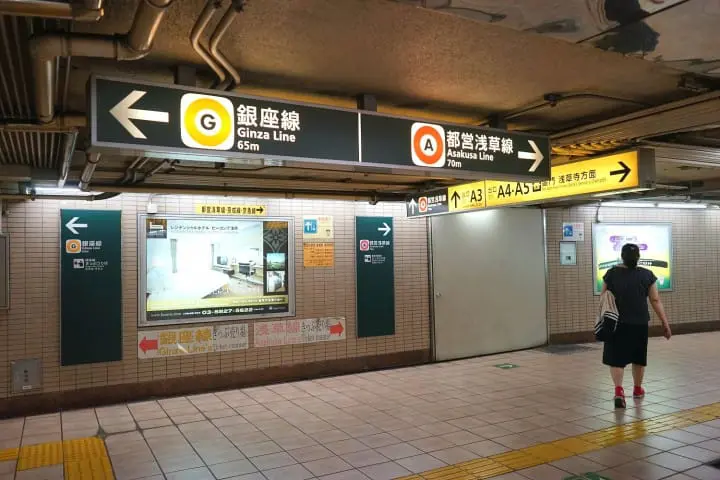
Toei Asakusa Line, symbolized with a rose red circle with a capital A, connects Oshiage Station (Tokyo SkyTree) with Nishi-magome Station in southern Tokyo.
The Toei Asakusa Line also stops at Narita Airport, Haneda Airport and Asakusa, so it's very convenient to move around efficiently in Tokyo.
Toei Mita Line
The Mita Line, marked by a dark blue circle with a capital M inside, stops at stations such as Suidobashi (Tokyo Dome), Otemachi, and Meguro.
Toei Shinjuku Line
The Shinjuku Line can be identified by a leaf green circle with a capital S inside. It stops at stations such as Shinjuku, Ichigaya, and Suidobashi.
Toei Oedo Line
The Oedo Line's symbol is a magenta circle with a capital E inside, is convenient when you want to travel to and from Shinjuku, Roppongi, and Ryogoku.
Toei Subway offers the very convenient Toei One-Day Pass (Toei Marugoto Kippu) which allows unlimited use of the entire Toei transportation network (Toei Subway, Toei Bus, Toden Arakawa Line, and Nippori-Toneri Liner). This pass can be purchased for 700 yen for an adult and 350 yen for a child passenger.
Visitors from abroad can also use the Tokyo Subway Ticket, issued by Toei Subway in collaboration with Tokyo Metro. This ticket is available in 1-day (800 yen), 2-day (1,200 yen), and 3-day (1,500 yen) versions, and allows unlimited use of all the Toei Subway and Tokyo Metro lines. For details on this extremely convenient ticket that can be used only on the underground train lines in Tokyo, please refer to the Toei Subway information page.
Navigating Tokyo's Transportation Labyrinth
The trick to figuring out Tokyo's train system is distinguishing between surface train lines and underground train lines, as well as understanding that there are various railway companies operating these lines.
A different railway network means separate fees, so if you wish to save up on transportation costs, you should try to stick to one railway network (either surface trains or underground trains) and use it as much and as efficiently as possible.
We also recommend checking out the convenient discount tickets and passes offered by each network. Some of these tickets are available only on a particular network of train lines but are very cost-efficient.

Last but not least, we strongly recommend the use of IC cards (Suica or Pasmo), which can be charged and used on any train (surface or underground) and bus line in the Tokyo area.
You can save yourself a lot of precious time and money by using a rechargeable IC card instead of buying train tickets all the time.
FAQ
What is the best train line in Tokyo?
Tokyo's train system offers various lines to cater to different travel needs. Key lines include the JR Yamanote Line, ideal for accessing major hubs; the Tokyo Metro Ginza Line, known for efficiency and connectivity; the Oedo Line for east-west travel; the JR Chuo Line linking western and central Tokyo; and the Tokyo Metro Marunouchi Line, a busy route connecting key districts.
Does Tokyo have 24 hour trains?
Tokyo's train and subway systems typically do not operate 24 hours a day, with services generally ceasing around midnight and resuming in the early morning, usually around 5:00 AM. However, alternatives like late-night buses such as the "Owl Bus," 24-hour taxi services, limited overnight train services on weekends, and early morning options for airport access provide some flexibility for late-night and early morning travel in the city.
How many types of trains are there in Tokyo?
In Tokyo, the train system is diverse and comprises various types of trains catering to different commuting needs. Common trains in Tokyo include JR East Lines connecting major stations, Tokyo Metro, and Toei Subway Lines offering efficient subway services. Shinkansen bullet trains provide high-speed intercity travel to destinations like Kyoto and Osaka, while limited express trains offer luxurious options for day trips.
Local trains serve shorter distances with more stops, and airport trains like the Narita Express and Keisei Skyliner connect Tokyo to Narita Airport. Rapid trains provide faster travel between key stations, and tourist trains offer themed experiences for sightseers. Tokyo's extensive train network ensures efficient transportation for locals and tourists alike.
What is the difference between JR and Metro?
In Tokyo, Japan Railways (JR) and the Tokyo Metro represent two key components of the city's transportation system. JR, operated by JR East, manages a vast network that includes urban and suburban rail lines like the Yamanote Line and extends to intercity services including the Shinkansen.
In contrast, the Tokyo Metro, overseen by the Tokyo Metropolitan Government, focuses on subway services primarily within central Tokyo, serving as a vital mode of transportation for navigating the city's core districts. While JR covers a broader area beyond Tokyo, the Metro's concentration is on efficiently connecting key areas within the city.
Is Tokyo Metro covered by JR Pass?
The Tokyo Metro is not covered by the standard Japan Rail Pass (JR Pass). The JR Pass is specifically for travel on JR-operated trains, including Shinkansen (bullet trains) and other JR lines across Japan. The Tokyo Metro and Toei Subway are separate subway systems not operated by JR, so they require separate fares for travel.
What is the best way to get around Tokyo?
The best way to navigate Tokyo effectively is to utilize its comprehensive public transportation system, which includes the extensive subway and train networks operated by Tokyo Metro, Toei Subway, and JR East. These systems cover the majority of the city and offer swift and efficient transportation options. Additionally, buses can complement your travel, especially for reaching specific destinations. Walking and cycling are ideal for exploring nearby areas, while taxis can be convenient for short trips or late-night travel.
Ramona, English content editor at MATCHA since 2016, has been practicing ikebana flower arrangement (Ikenobo School) and tea ceremony (Omote Senke) since 2012. She arrived in Japan in 2012 as a graduate student with a focus on Japanese literature and performing arts. As a travel editor and writer, Ramona has visited and documented 40 of Japan's prefectures with a focus on art, history, traditional Japanese crafts, and performing arts.









































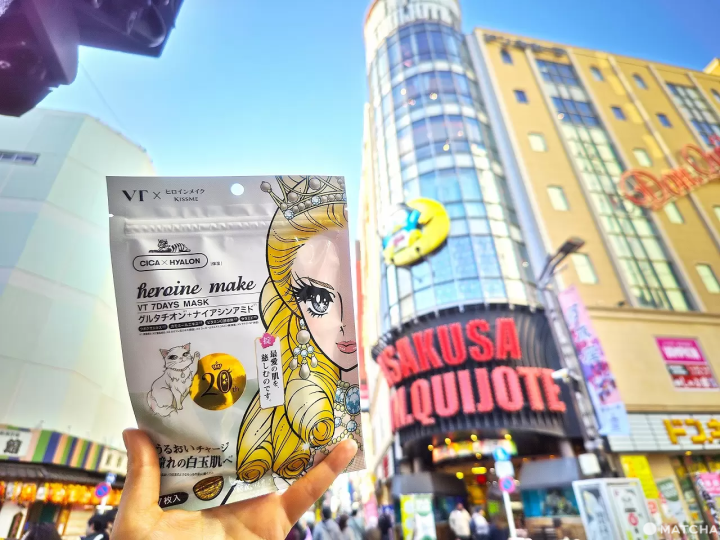

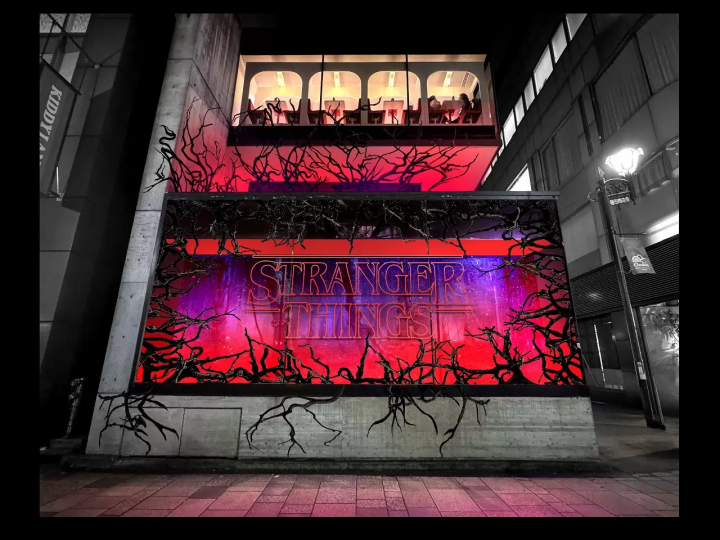

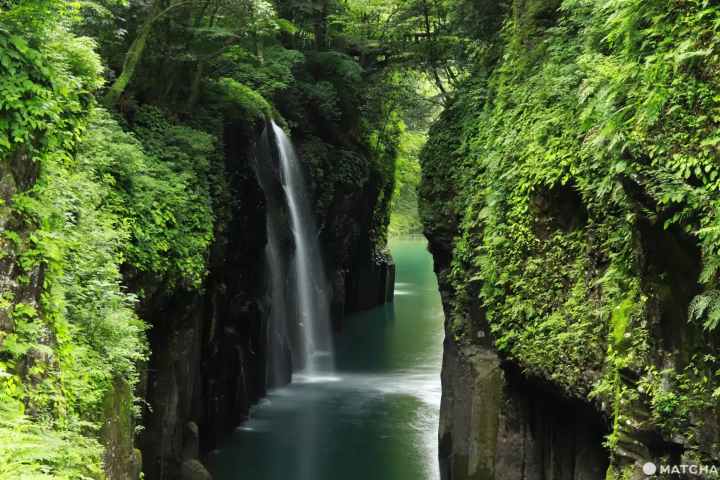




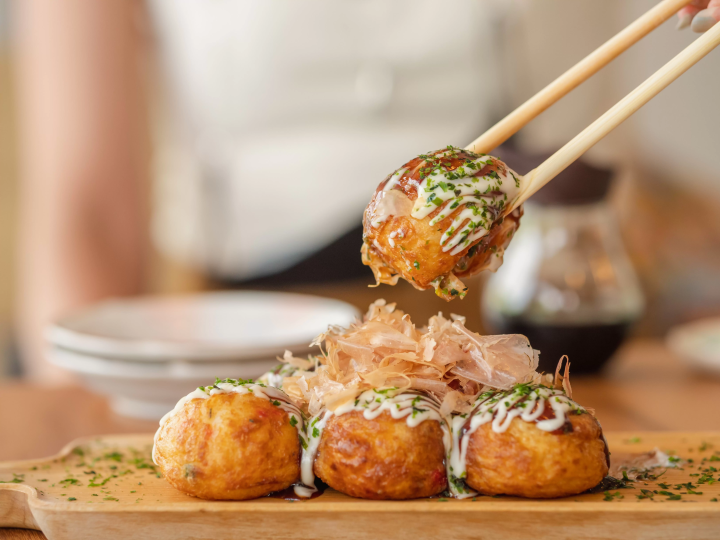
![[2026 Edition] FORMUAL 1 JAPANESE GRAND PRIX Information](https://resources.matcha-jp.com/resize/720x2000/2025/10/05-245984.webp)
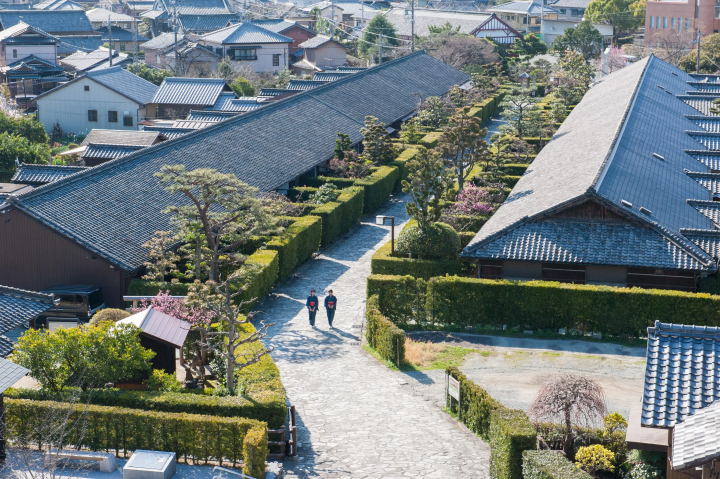
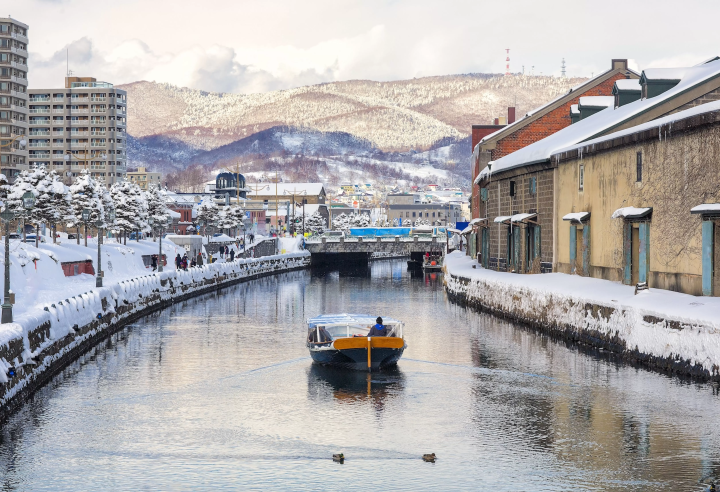
![[2025 Update] Namba's spectacular illuminations! "Namba Hikari Tabi" with approximately 1 million shining lights](https://resources.matcha-jp.com/resize/720x2000/2025/12/12-252825.webp)